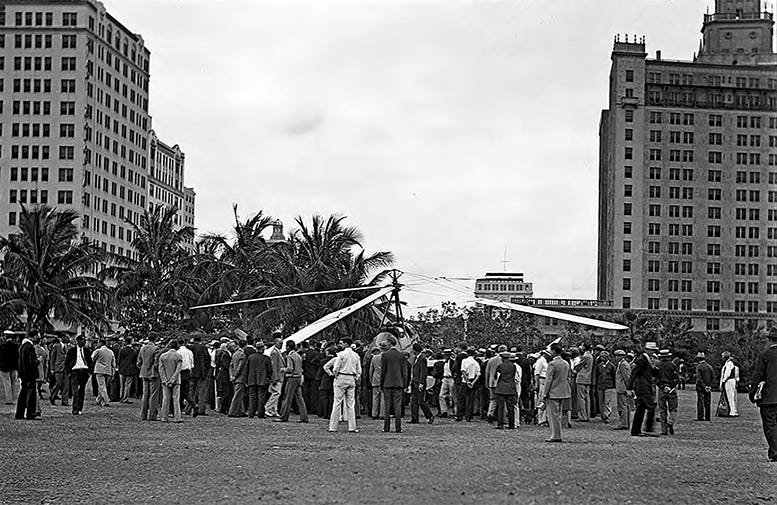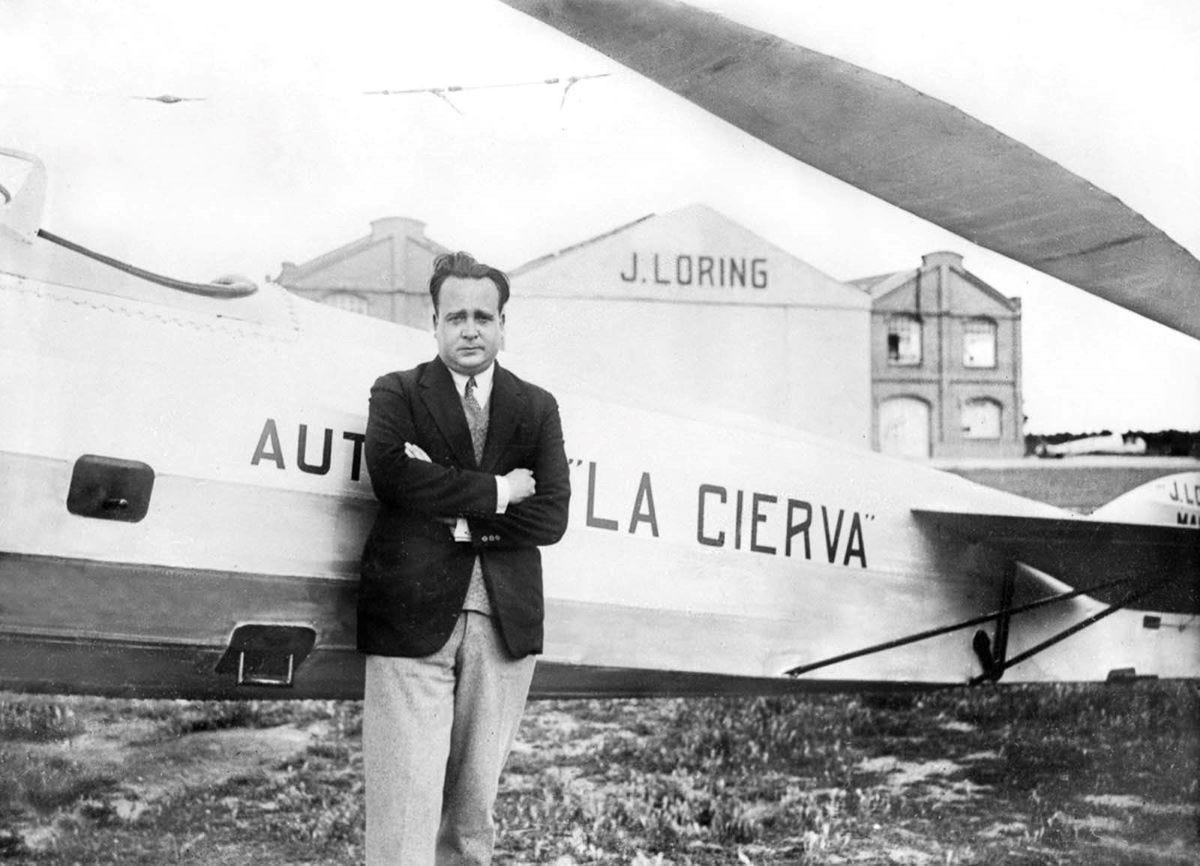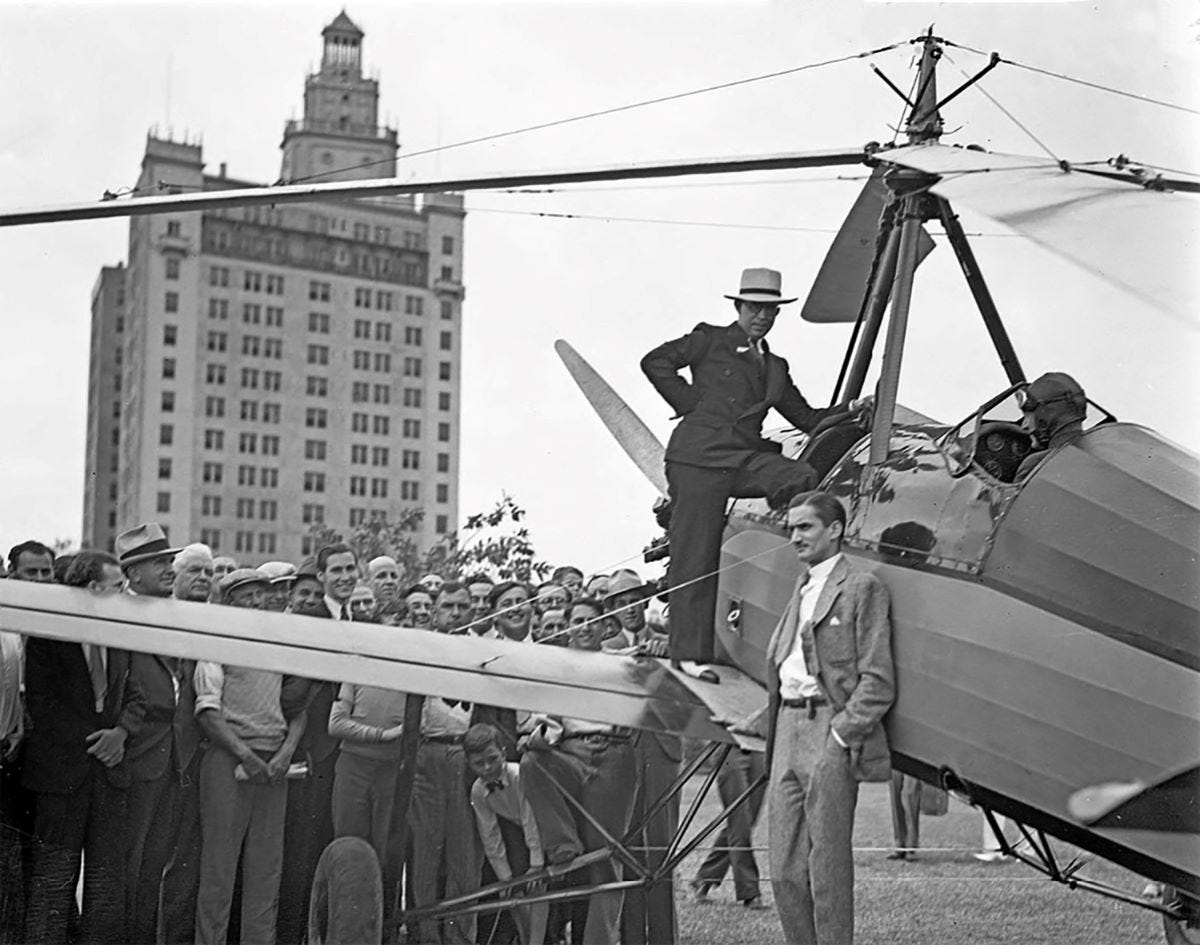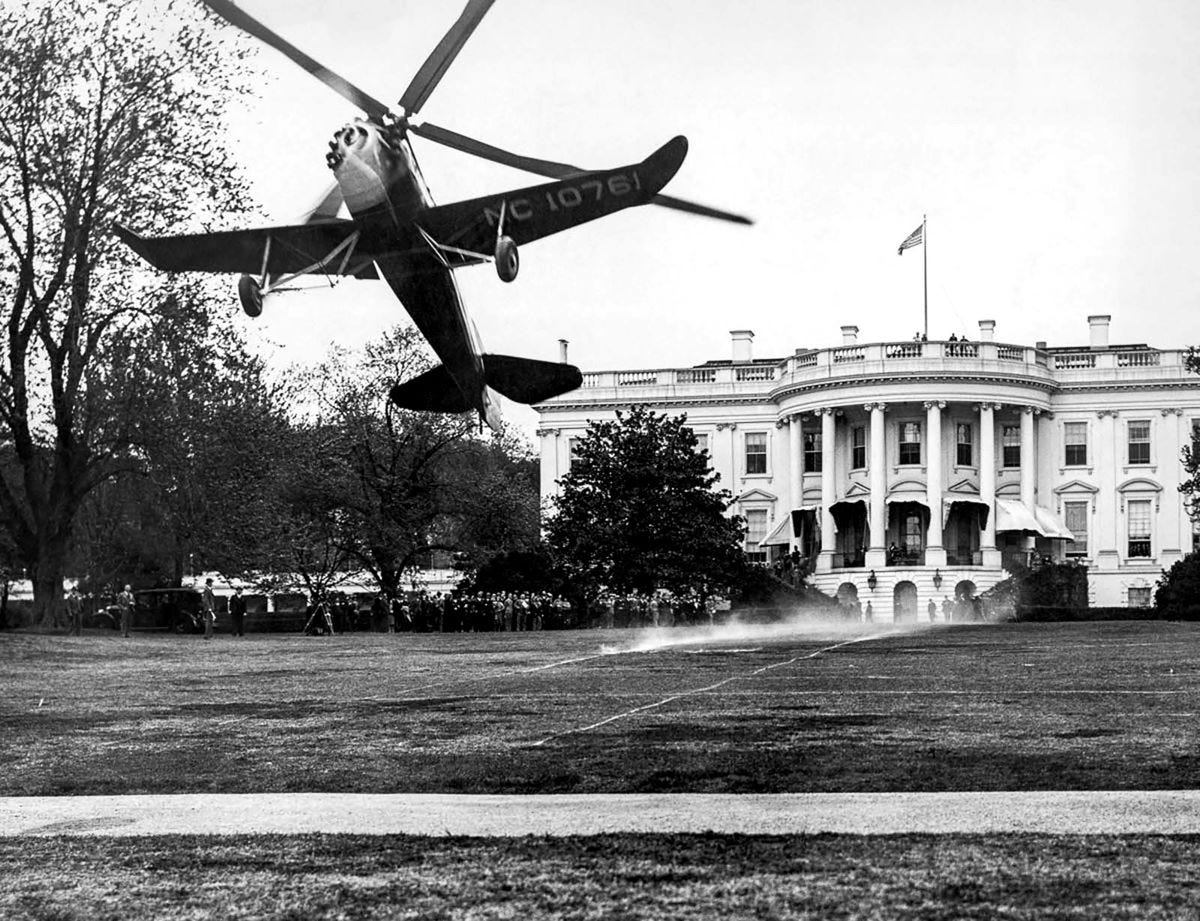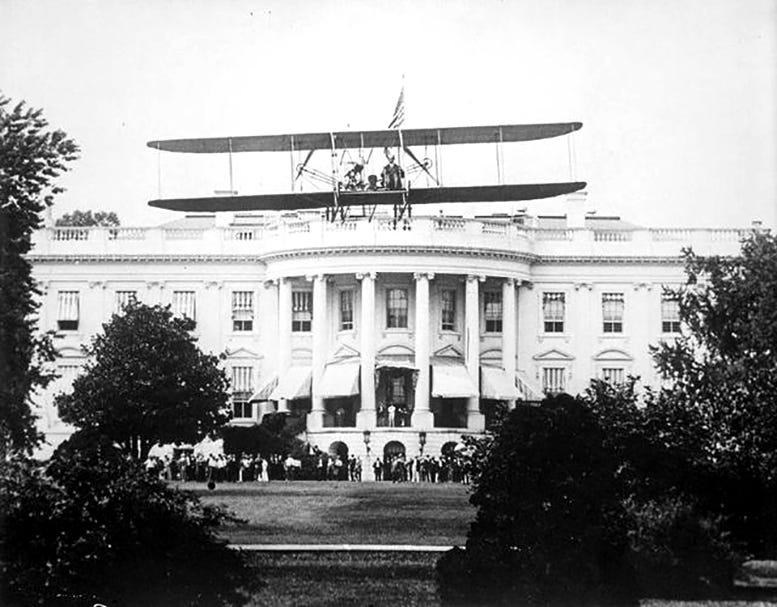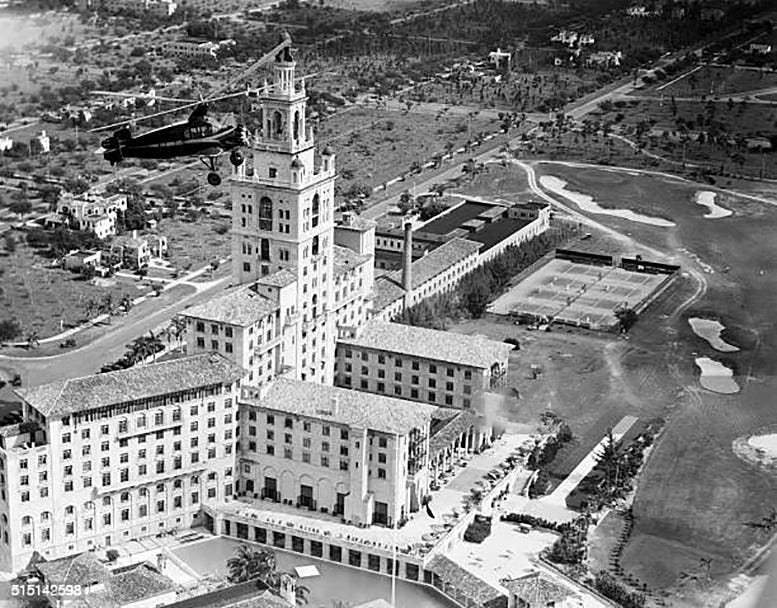South Florida has been at the center of aeronautical events since the dawn of aviation. Pan American and Eastern airlines were two of the largest airline carriers and were based in Miami. There was even a time when Miami was being promoted as the “Detroit of the aviation industry”, referring to the desire of Miami to becoming the center of the aviation industry similar to the way Detroit was known as the hub of the automobile industry. Given the temperate year-round weather and a flat terrain, South Florida attracted flight schools and aeronautical exhibitions, which made it the ideal venue to promote an innovative new aircraft.
In January of 1931, James G. Ray piloted a unique air vessel called an autogiro from Philadelphia to Miami, which was the longest journey for an aircraft of this kind in its eight-year history. The Autogiro was a hybrid airplane and helicopter craft invented by a Spanish aviation pioneer in the early 1920s. The purpose of Ray’s journey was to participate in a multi-day airshow hosted at the Miami Municipal Airport. However, during his time in Miami, James also took the opportunity to demonstrate the agility of the Autogiro by taking off from Bayfront Park and flying around the skyline of downtown Miami to help promote this new style of aircraft.
Invented by Spanish Aviator in 1923
Juan de la Cierva was a Spanish engineer, inventor, pilot, and aviation enthusiast. In 1921, Cierva participated in a design competition to develop a bomber for the Spanish military. However, his design, when tested, stalled, and crashed inspiring Cierva to find a solution for the “stall” problem so common with early airplane. He focused his effort on a design that could fly safely at low air speeds. It was this curiosity that led to the invention of the autogiro, which is best described as an aircraft with rotating, horizontal blades, and a front propeller.
It took four designs to have a working prototype ready for a test flight. The first flight of the Autogiro took place out of the Cuatro Vientos airfield in Madrid, Spain on January 17, 1923. De la Cierva's autogiro used an airplane fuselage with a forward-mounted propeller and engine, an un-powered rotor mounted on a mast, and a horizontal and vertical stabilizer. One feature of the aircraft was that it could take off and land vertically which has led many aviation historians to claim that the autogiro was the precursor to the helicopter.
Miami All-American Air Meet
By the early 1930s, the enthusiasm for the autogiro led to a license deal with Pitcairn Aircraft Company from Philadelphia, Pennsylvania. The company was founded in 1926 by Harold Frederick Pitcairn, an aviation pioneer who was an apprentice of Curtiss Aeroplane and Motor Company in Hammondsport, New York, in 1914, attendee of the Curtiss Flying School in 1916, and a World War I fighter pilot. He was also the youngest son of John Pitcairn Jr, who was one of the co-founders of the Pittsburgh Plate Glass Company (PPG).
In June of 1929, Pitcairn Aircraft Company was acquired by Clement Keys, the owner of North American Aviation. In 1930, Keys’ company changed its name to the Eastern Air Transport Company and, after licensing the rights to manufacturer and fly the autogiro in 1931, created a subsidiary company called the Autogiro Company of America (ACA). The conglomerate of airline companies was purchased by General Motors in 1934 and was renamed to Eastern Air Lines, when aviation legend Eddie Rickenbacker (the Ace of Aces) was put in charge of the company. Eastern flourished under Rickenbacker during the mid-century decades, but went out of business in 1991 a couple years after filing for bankruptcy in the late 1980s.
Pitcairn’s Autogiro specialist pilot was James G. Ray, who was vice president of the company. One of Ray’s primary responsibilities was to showcase the aircraft at air shows, exhibitions, and for special events, and was the pilot responsible for demonstrating and promoting the aircraft.
It was the third Miami All-American Air Meet at the Miami Municipal Air Field that brought James Ray to South Florida in January of 1931. Ray made what was the longest trip in the short history of the autogiro aircraft when he flew from Philadelphia to Miami on January 6, 1931. It was also the first trip south of the state of Virginia for this type of aircraft according to Pitcairn officials.
The air meet began on Thursday, January 8, 1931, and concluded on Saturday, January 10, 1931. The show was a weekend long extravaganza and featured flyers from all over the country. In addition to the flying exhibitions, the weekend featured musical events conducted by the University of Miami Symphony Orchestra as part of the auspices of the Concert League of Miami. Many of the participants and attendees of the air meet stayed in downtown Miami in the hotels along Biscayne Boulevard, which made the impromptu exhibition that took place the following Monday, after the conclusion of the air show, a particularly well attended event.
Flight from Bayfront Park
On the Monday following the big air show James Ray conducted a demonstration of the autogiro in downtown Miami by taking off, flying, and then landing vertically back at the park to showcase the nimble features of this unique aircraft. The event was coordinated with Hamilton M Wright Jr, the City of Miami’s publicity director, and was recorded by still and movie tone photographers as part of a promotional stunt for the aircraft and the city.
Ray landed the Autogiro aircraft at Bayfront Park near the bandstand at approximately 11am. An account by a Miami Herald reporter wrote that he had breakfast in his “windmill plane”, then posed for photographers, before he took off from Bayfront Park to circle the city’s skyline. The Herald reporter went on to write: “The plane, designed to land and take off nearly vertically, has been the leading attraction at the air races.”
As part of the promotional event, once Ray landed back in Bayfront Park after his flight around the buildings in downtown Miami, he participated in one more memorable moment when, as the Herald reported wrote: “while photographers snapped shutters, Ray smilingly accepted a traffic violation ticket from a Miami policeman, drank a glass of milk, and hopped off again for the airport.” This may be the only documented case of someone in Miami ‘smilingly accepting’ a traffic ticket from a police officer.
While Ray’s flight around Bayfront Park was captured on Newsreel footage and promoted throughout the country, the Miami exhibition was not the most notable flight made by Ray in his autogiro aircraft. That would take place three months later.
James Ray Lands on White House Lawn
One of the most memorable exhibitions of the autogiro took place on April 22, 1931, when James Ray landed the aircraft on the White House lawn as part of an award ceremony. President Herbert Hoover presented the Collier trophy to Harold Pitcairn and Associates for the development and advancement of the paddle technology used in the autogiro. The Robert J. Collier Trophy was created in 1910 and awarded annually to honor major achievements in aeronautics. Pitcairn and his team were selected as the winners of the 1930 award and were presented the trophy in April of 1931.
As part of the ceremony, Ray circled Washington DC before landing on the grounds of the White House. It took three attempts to land the aircraft given the shifting gusts of wind on that day, but finally, the videographers were able to capture the magical moment when Ray safely landed on the spot designated for the touchdown as part of the ceremony. This event represented only the second time an aircraft settled onto the grounds of the White House when, twenty years earlier, on July 15, 1911, Harry Atwood landed an airplane on the lawn when Howard Taft was president.
As the president’s family watched the exhibition and landing from the South Portico, Hoover, and a group of aeronautical dignitaries, greeted Ray as he landed and then disembarked from the autogiro. In attendance at the ceremony were previous Collier trophy winners Orville Wright, Charles Lawrence, Grover C. Leoning, William Starling Burgess, as well as Secretary of the Navy Charles Francis Adams, and autogiro inventor Juan De La Cierva.
In his remarks while presenting the trophy, President Hoover stated:
“The invention of the autogiro is one of the outstanding improvements in heavier-than-aircraft. Its ability to arise and descend with safety almost vertically makes it a practical and decided step forward.”
Flight safety was a big concern at the time of this ceremony following the plane crash that killed Notre Dame legendary coach Knute Rockne on March 31, 1931, in route to Los Angeles to film a movie called ‘The Spirit of Notre Dame’. Herbert Hoover declared the plane crash a “national loss”, and vowed to pursue an agenda of flight safety. Given the nature of the autogiro, it was considered a breakthrough in aircraft safety, which influenced Hoover’s carefully crafted remarks during the award ceremony.
Pitcairn accepted the award, while sharing the honor with Juan De La Cierva, by concluding the ceremony with these words:
“It is our firm conviction that the continued development of the autogiro will lead to the general adoption by the public of flying for both utility and pleasure. We shall continue our work to this end with a profound responsibility implied by this public recognition.”
Like the exhibition in Bayfront Park in January, the flight exhibition and award ceremony were captured on video and broadcast via the News Reel network. During these times, News Reel videos were broadcast in movie theaters, but fortunately are also available in video archives today.
Following his exhibition which concluded with a landing on the grounds of the White House, James Ray then landed a specially made autogiro on the lawn of the Smithsonian Institution on July 22, 1931, as part of a ceremony to be included in the permanent transportation exhibit of the national museum. Ray flew that aircraft from Willow Grove, Pennsylvania, to Washington D.C. for that honor.
Miss Biltmore Autogiro
A couple years later, the Autogiro design had evolved and could support a much larger seating capacity than the models flown in 1931. The world’s largest cabin autogiro and the first commercial ship of its type made its return to Miami by landing the newly designed autogiro on the golf course of the Biltmore Hotel on Sunday, January 22, 1933. The new model was designed for the Florida Year-Round club members, which was headed by Colonel Henry L. Doherty, who was the head of the Cities Services Companies, known today as Citgo, and a big proponent of Florida during the Great Depression years.
The aircraft that landed on the golf course was christened ‘Miss Biltmore’ in Washington a few days prior to the flight in January of 1933, and was put into commission to shuttle people from the Biltmore Hotel in Coral Gables to the Roney Plaza Hotel Sun Club on Miami Beach. What was once a 25 to 30-minute journey in the earlier version of the Autogiro, was shortened to a 6 to 8-minute journey in Miss Biltmore. The shuttle service was free to club members and guests of either the Biltmore or the Roney Plaza hotels.
The new model was described by the Miami Herald as:
“The autogiro, which has a 420-horsepower Wright Whirlwind engine as its power plant, has a high speed of more than 120 miles per hour, and a cruising speed of between 100 and 105. The rotor, the four-bladed “fan” that supports the ‘giro in the air’, is 50 feet in diameter. The overall length of the craft is 34 feet, 11 inches, making it the largest commercial machine of its type ever constructed. Despite its size and weight, the performance of the ship is said, by those who have flown it, to be even better than the smaller, open cockpit models. The cabin is constructed to carry a pilot and four passengers with 75 gallons of fuel in the two tanks, and is insulated against both heat and cold. It is practically soundproof, and the passengers may converse in ordinary tones while flying.”
In addition to service between the Biltmore and Roney Plaza Hotels, Doherty offered periodic aerial taxi service for club members to and from his Angler’s Club on Key Largo. It isn’t clear how long this shuttle service was in operation, but references of a schedule of Miss Biltmore stopped being published in local newspapers within two years after service began. Following Henry Doherty’s untimely passing in December of 1939, the air taxi service was only mentioned in association with articles commemorating Doherty’s time in South Florida.
While the autogiro, sometimes spelled ‘autogyro’, was a technological leap for aircraft design during the 1920s and 30s, it was largely replaced by the helicopter as the preferred commercial vehicle of choice for vertical take-off and landing. Forms of more contemporary autogiro designs are still around today, but primarily licensed for leisure travel rather than for commercial purposes.
Resources:
American Heritage: “The President and the Autogiro”, February / March 1983.
Washington Post: “Flies to Visit Taft” on July 15, 1911.
Miami Herald: “Sky Windmill Races Toward Miami Airport” on July 6, 1931.
Miami Herald: “Autogiro Will Land in Boulevard Today” on January 11, 1931.
Miami Herald: “Air Meet Ends After Added Day of Events” on January 12, 1931.
Miami Herald: “Autogiro Lands on White House Lawn” on April 23, 1931.
Miami Herald: “First Autogiro Flies to Museum” on July 23, 1931.
Miami Herald: “Largest Autogiro to Land Here Today” on January 22, 1933.
Miami Herald: “New Autogiro Here for Hotel Service” on January 23, 1933.
Images:
Cover: Autogiro in Bayfront Park on January 11, 1931. Courtesy of Author.
Figure 1: Inventor of the Autogiro, Juan De La Cierva. Courtesy of Library of Congress.
Figure 2: James Ray on Autogiro in Bayfront Park on January 11, 1931. Courtesy of Miami-Dade Public Library, Romer Collection.
Figure 3: Autogiro on White House Lawn on April 23, 1931. Courtesy of Library of Congress.
Figure 4: Harry Atwood on White House Lawn on July 15, 1911. Courtesy of the Smithsonian Institute.
Figure 5: Miss Biltmore over Biltmore Hotel in Coral Gables on January 22, 1933. Courtesy of Getty Images.




